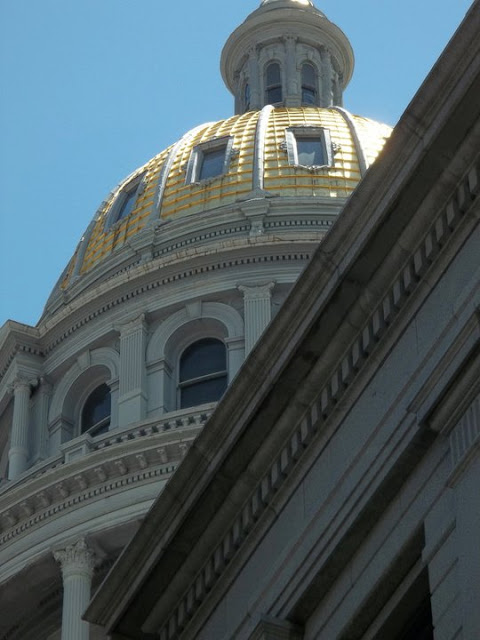Instrument of your peace
By Rob Carrigan, robcarrigan1@gmail.com
I
didn’t know a thing about it until I made it to work. Oblivious.
Almost
always, I would listen to the news stations on the 45-minute commute in, but
for some reason, that day, I was spared the panic and chaos. The minute I
walked in the office door, however, it was obvious that something was terribly
wrong.
I’m
sure most of you have your own Sept. 11 moment … or a series of them.
The stories and images of 9/11 stand out in all
of our minds.
Ten years later, I try to focus. Father Mychal
Judge, comes to the forefront in mine.
They have called him the Saint of 9/11.
Father
Judge rushed to the World Trade Center that morning. According to multiple
press reports, he was met by the Mayor of New York, Rudolph Giuliani, who
asked him to pray for the city and its victims. Judge administered the Last Rites to some lying
on the streets, then entered the lobby of the World Trade Center North Tower, where an
emergency command post
was organized. There he continued offering aid and prayers for the rescuers,
the injured and dead.
When the South Tower collapsed at
9:59 AM, debris went flying through the North Tower lobby, killing many inside,
including Judge.
According
to Judge's biographer and New York
Daily News columnist Michael Daly, in his last moments Judge was
repeatedly praying aloud, "Jesus, please end this right now! God,
please end this!"
A NYPD
lieutenant, who had also been buried in the collapse, found Judge's body and
assisted by two firemen and two civilian bystanders carried it out of the North
Tower lobby to nearby St Peter's
Church. This event was captured in the documentary film 9/11, shot by Jules and
Gedeon Naudet. Shannon Stapleton, photographer from Reuters, photographed
Judge's body being carried out of the rubble by five men. It became one of the most famous images related to 9/11.
Mychal Judge was designated as "Victim 0001," recognized
as the first official victim of the September 11, 2001 attacks. Other victims
perished before him including aircrew, passengers, and occupants of the towers,
but Judge was the first certified fatality because his was the first body to be
recovered and brought to the coroner.
From
Dick Cheney’s memoir about his “Meet the Press” appearance on the first
Sunday after Sept. 11, 2001: “Tim Russert
closed the interview with a remembrance of Father Mychal Judge, the chaplain of
the New York City Fire Department,” Cheney writes. “Father Mike was killed at
the World Trade Center on 9/11 by falling debris as he administered last rites
to a first responder. Tim told of the firefighters who carried Father Mike’s
body to their firehouse and who together with Father Mike’s fellow Franciscans
sang the prayer of Saint Francis. ‘That,’ Tim said, ‘is the way of New York.
That is the spirit of America.’ The Meet the Press crew members stood
and applauded.”
Prayer of Saint Francis of Assisi
Lord, make me
an instrument of your peace
Where there is
hatred, let me sow love;
where there is injury,
pardon;
where there is doubt,
faith;
where there is
despair, hope;
where there is
darkness, light;
and where
there is sadness, joy.
O Divine
Master, grant that I may not so much seek
to be consoled as to
console;
to be understood as
to understand;
to be loved as to
love.
For it is in giving
that we receive;
it is in pardoning
that we are pardoned;
and it is in dying
that we are born to eternal life. Amen
Even before his heroic death on 9/11, many considered Mychal Judge to be
a living saint for his extraordinary compassion and deep spirituality.
"Mychal had no use for physical things.
Give him a cashmere sweater, and it would end up on the back of a homeless
person. But go to him with a troubled soul, and he would listen intently for as
long as it took." ___ Steven McDonald
While praying, Mychal would sometimes "become so lost in God, as if
lost in a trance, that he'd be shocked to find several hours had passed"
(Michael Daly). "He achieved an
extraordinary degree of union with the divine. We knew we were dealing with
someone directly in line with God." ___Fr. John McNeill
“I, Mychal Judge, am not capable of doing
these things on my own. I walk in, hold a hand, wipe a tear, say a prayer. But
that’s not me, that’s the grace of God. I don’t worry about the details… it’s a
mystery, it’s God.”
Once in a
while," his friend Michael Duffy, a friar from Philadelphia who said Judge’s
homily, "he would say to me, 'Michael Duffy' -- he always called me by my
full name -- 'Michael Duffy, you know what I need?' And I would get excited
because it was hard to buy him a present or anything. I said, 'No, what?'
"'You
know what I really need?'
"'No,
what, Mike?'
"'Absolutely nothing. I don't need a thing in the world. I am the
happiest man on the face of the earth.'"
From the Last Homily of Father Mychal Judge ,FDNY Chaplain, at Mass for
Firefighters: Sept. 10, 2001:
“You do what
God has called you to do. You get on that rig, you go out and do the job. No
matter how big the call, no matter how small, you have no idea of what God is
calling you to do, but God needs you. He needs me. He needs all of us.
“
3,000 people attended Judge's funeral on September 15, 2001, at St. Francis of Assisi Church in Manhattan.
###














